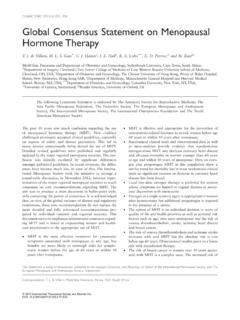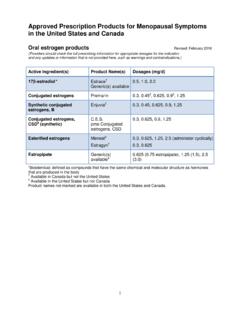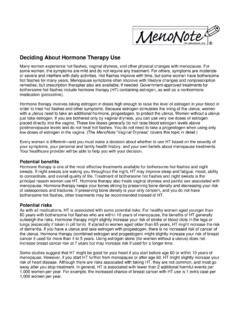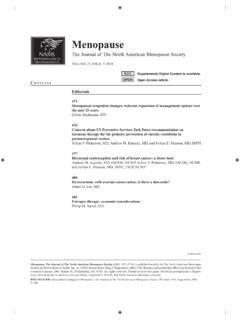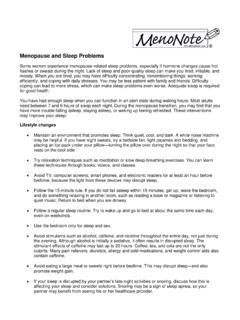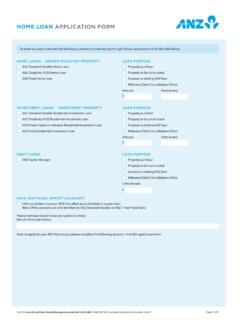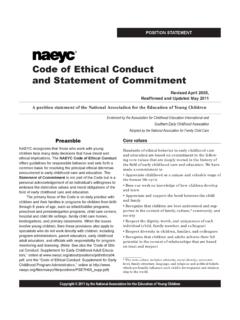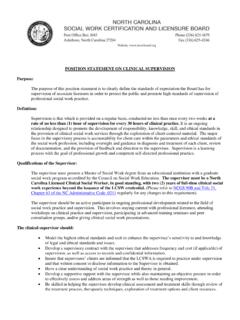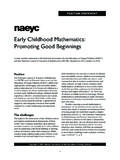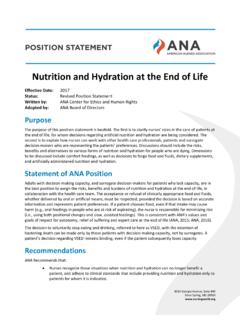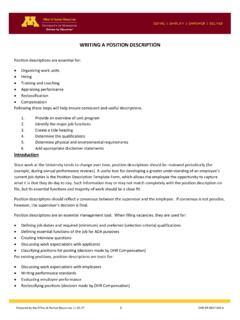Transcription of The 2017 hormone therapy position statement of The North ...
1 Copyright @ 2017 The North american menopause society . Unauthorized reproduction of this article is 2017 hormone therapy position statement of The North AmericanMenopause SocietyAbstractThe 2017 hormone therapy position statement of The North american menopause society (NAMS) updates the2012 hormone therapy position statement of The North american menopause society and identifies future researchneeds. An Advisory Panel of clinicians and researchers expert in the field of women s health and menopause wasrecruited by NAMS to review the 2012 position statement , evaluate new literature, assess the evidence, and reachconsensus onrecommendations,usingthelevelofevidenc eto identify the strength ofrecommendationsandthe qualityof the evidence.
2 The Panel s recommendations were reviewed and approved by the NAMS Board of therapy (HT) remains the most effective treatment for vasomotor symptoms (VMS) and the genito-urinary syndrome of menopause (GSM) and has been shown to prevent bone loss and fracture. The risks of HT differdepending on type, dose, duration of use, route of administration, timing of initiation, and whether a progestogen isused. Treatment should be individualized to identify the most appropriate HT type, dose, formulation, route ofadministration, and duration of use, using the best available evidence to maximize benefits and minimize risks, withperiodic reevaluation of the benefits and risks of continuing or discontinuing women aged younger than 60 years or who are within 10 years of menopause onset and have no contraindications, thebenefit-risk ratio is most favorable for treatment of bothersome VMS and for those at elevated risk for bone loss or women who initiate HT more than 10 or 20 years from menopause onset or are aged 60 years or older.
3 The benefit-riskratio appears less favorable because of thegreater absolute risks of coronary heart disease, stroke, venous thromboembolism,and dementia. Longer durations of therapy should be for documented indications such as persistent VMS or bone loss, withshared decision making and periodic reevaluation. For bothersome GSM symptoms not relieved with over-the-countertherapies andwithout indicationsforuse ofsystemic HT,low-dosevaginal estrogentherapy orothertherapies are Words:Breast cancer Cardiovascular disease Cognition Estrogen hormone therapy menopause position statement Vaginal atrophy Vasomotor symptomsThis NAMS position statement has been endorsed by Academy of Women s Health, american Association ofClinical Endocrinologists, american Association of Nurse Practitioners, american Medical Women s Association, american society for Reproductive Medicine, Asociacio n Mexicana para el Estudio del Climaterio, Association ofReproductive Health Professionals, Australasian menopause society , ChineseMenopause society , Colegio Mexicanode Especialistas en Ginecologia y Obstetricia.
4 Czech menopause and Andropause society , Dominican MenopauseSociety, European menopause and Andropause society , German menopause society , Groupe d e tudes de lame nopause et du vieillissement Hormonal, HealthyWomen, Indian menopause society , International MenopauseSociety, International Osteoporosis Foundation, International society for theStudy of Women s Sexual Health, IsraeliMenopause society , Japan society of menopause and Women s Health, Korean Societyof menopause , MenopauseResearch society of Singapore, National Association of Nurse Practitioners in Women s Health, SOBRAC andFEBRASGO, SIGMA Canadian menopause society , Societa` Italiana della Menopausa, society of Obstetricians andGynaecologists of Canada, South African menopause society , Taiwanese menopause society , and the ThaiMenopause society .
5 The american College of Obstetricians and Gynecologists supports the value of this clinicaldocument as an educational tool, June 2017. The British menopause society supports this position April 5, 2017; revised and accepted April 6, position statement was developed by The North american Meno-pause society 2017 hormone therapy position statement Advisory Panelconsisting of representatives of the NAMS Board of Trustees and otherexperts in women s health: JoAnn V. Pinkerton, MD, NCMP, Chair;Dr. Fernando Sa nchez Aguirre; Jennifer Blake, MD, MSC, FRCSC;Felicia Cosman, MD; Howard Hodis, MD; Susan Hoffstetter, PhD,WHNP-BC, FAANP; Andrew M.
6 Kaunitz, MD, FACOG, NCMP; SherylA. Kingsberg, PhD; Pauline M. Maki, PhD; JoAnn E. Manson, MD,DrPH, NCMP; Polly Marchbanks, PhD, MSN; Michael R. McClung,MD; Lila E. Nachtigall, MD, NCMP; Lawrence M. Nelson, MD; DianeTodd Pace, PhD, APRN, FNP-BC, NCMP, FAANP; Robert L. Reid, MD;Phillip M. Sarrel, MD; Jan L. Shifren, MD, NCMP; Cynthia A. Stuenkel,MD, NCMP; and Wulf H. Utian, MD, PhD, DSc (Med). The Board ofTrustees conducted an independent review and revision and approved theposition position statement was made possible by donations to the NAMSE ducation & Research was no commercial correspondence to The North american menopause society ;30100 Chagrin Blvd.
7 , Suite 210; Pepper Pike, OH : Website: , Vol. 24, No. 7, 2017 menopause : The Journal of The North american menopause SocietyVol. 24, No. 7, pp. 728-753 DOI: 2017 by The North american menopause SocietyCopyright @ 2017 The North american menopause society . Unauthorized reproduction of this article is 2017 hormone therapy position statement of TheNorth american menopause society (NAMS) pro-vides evidence-based and current best clinical prac-tice recommendations for the use of hormone therapy (HT) forthe treatment of menopause -related symptoms and reviewsthe effects of HT on various health conditions at differentstages of a woman s availability of new clinical trial data prompted theNAMS Board of Trustees to update the NAMS 2012 HormoneTherapy position statement .
8 The new data include findingsfrom long-term randomized, clinical trials (RCTs) and obser-vational studies related to 1) the effects of HT during and afterits use and 2) detailed analyses stratified by age and time sincemenopause onset. NAMS convened an Advisory Panel ofclinicians and researchers expert in the field of women shealth and menopause to provide recommendations for thisupdated position termhormone therapyis used to encompass estrogentherapy (ET) and estrogen-progestogen therapy (EPT) whenoutcomes are not specific to one or the other treatment,although whenever possible the different effects of ET,EPT, and estrogen-receptor (ER) agonists or antagonistsare included.
9 Key to initiating or continuing HT in an indi-vidual woman is an understanding of the benefits and risks ofage at initiation or time since menopause , specific formu-lations or types of HT, the duration of therapy , the need formonitoring during therapy , potential risks of continuation,and the need for shared decision use of HT is considered for different cultural orminority populations of women, including those with surgicalmenopause, early menopause , or primary ovarian insuffi-ciency (POI) and for women aged older than 65 statements do not represent codified practice stand-ards as defined by regulating bodies or insurance Advisory Panel of clinicians and researchers expert inthe field of women s health and menopause were enlisted toreview the NAMS 2012 hormone therapy position State-ment ( ), evaluate the liter-ature published subsequently, and conduct an evidence-based analysis, with the goal of reaching consensus acknowledges that no single trial s findings can beextrapolated to all women.
10 The Women s Health Initiative(WHI) is the only large, long-term RCT of HT in women aged50 to 79 years, and its findings were given prominentconsideration. However, the WHI employed just one routeof administration (oral), one formulation of estrogen (con-jugated equine estrogens [CEE], mg), and only oneprogestogen (medroxyprogesterone acetate [MPA], mg),with limited enrollment of women with bothersome vaso-motor symptoms (VMS; hot flashes, night sweats) who wereaged younger than 60 years or who were fewer than 10 yearsfrom menopause onset the group of women for whom HT isprimarily indicated. In general, the Panel gave greaterconsideration to findings from larger RCTs or meta-analysesof larger RCTs and reviewed additional published analyses ofthe WHI findings; newer outcomes from smaller RCTs;longitudinal observational studies; and additional 2017 hormone therapy position statement of TheNorth american menopause society is based on materialrelated to methodology, a review of key studies and evi-dence-based literature, and presentation and synthesis ofevidence.
